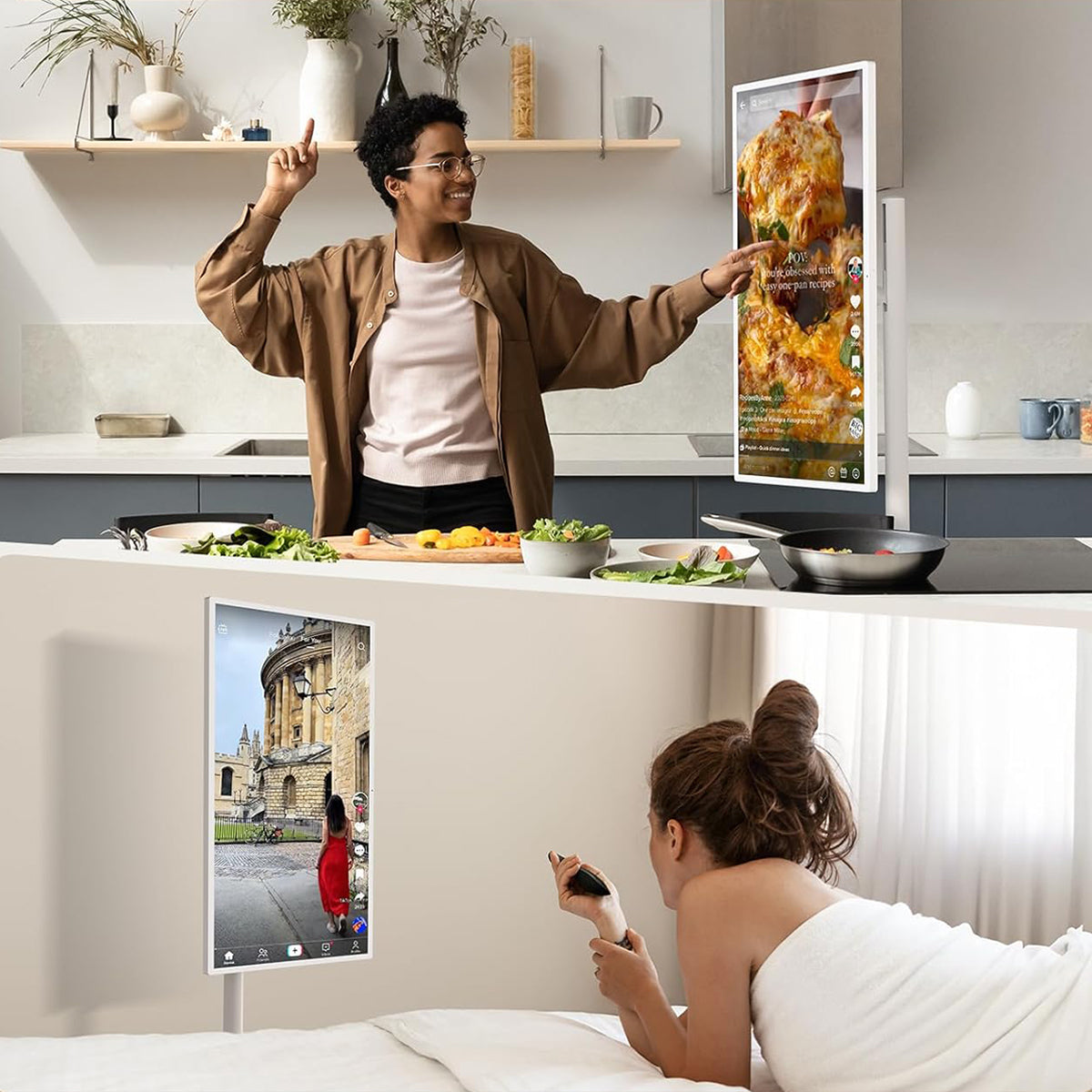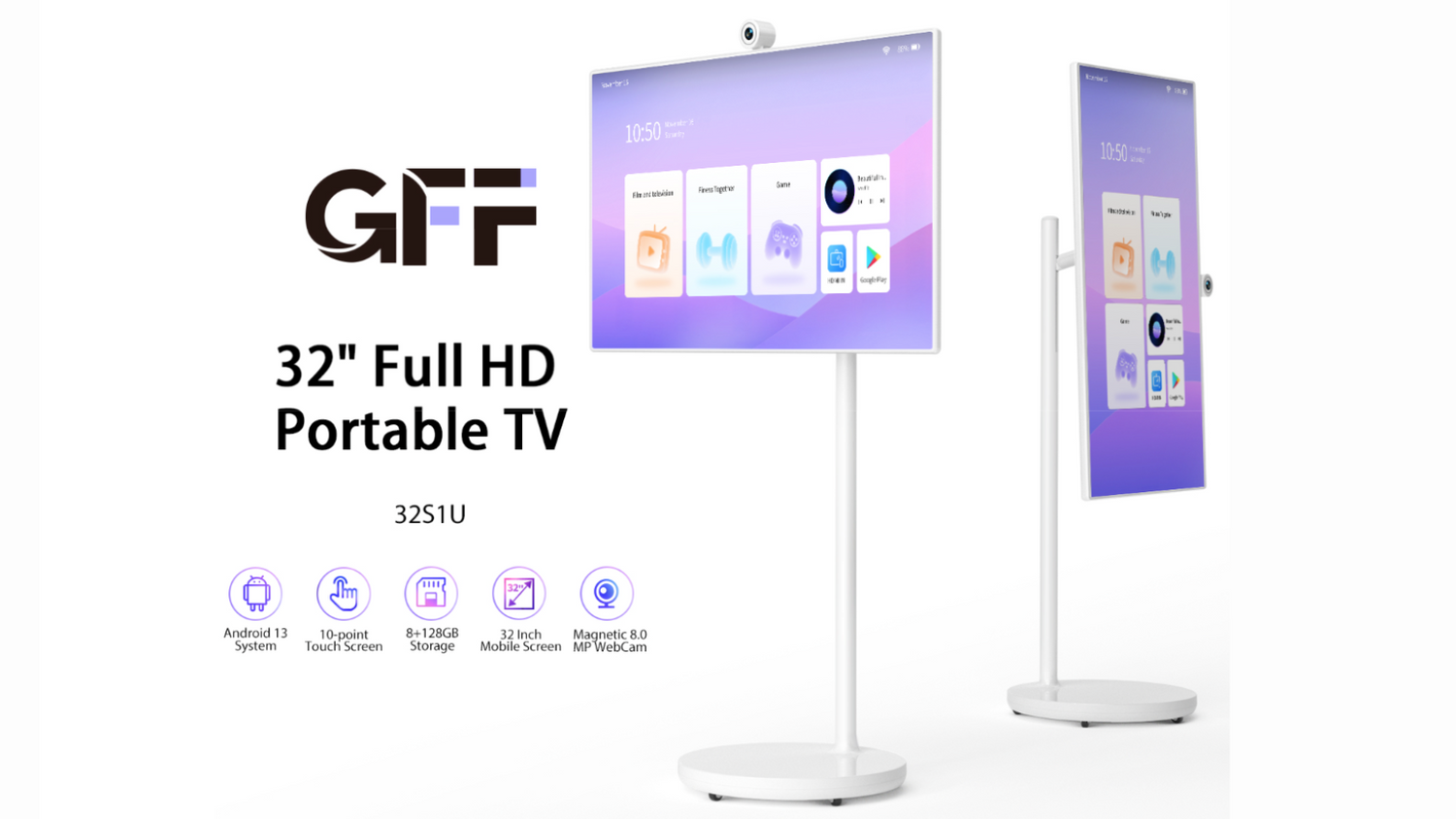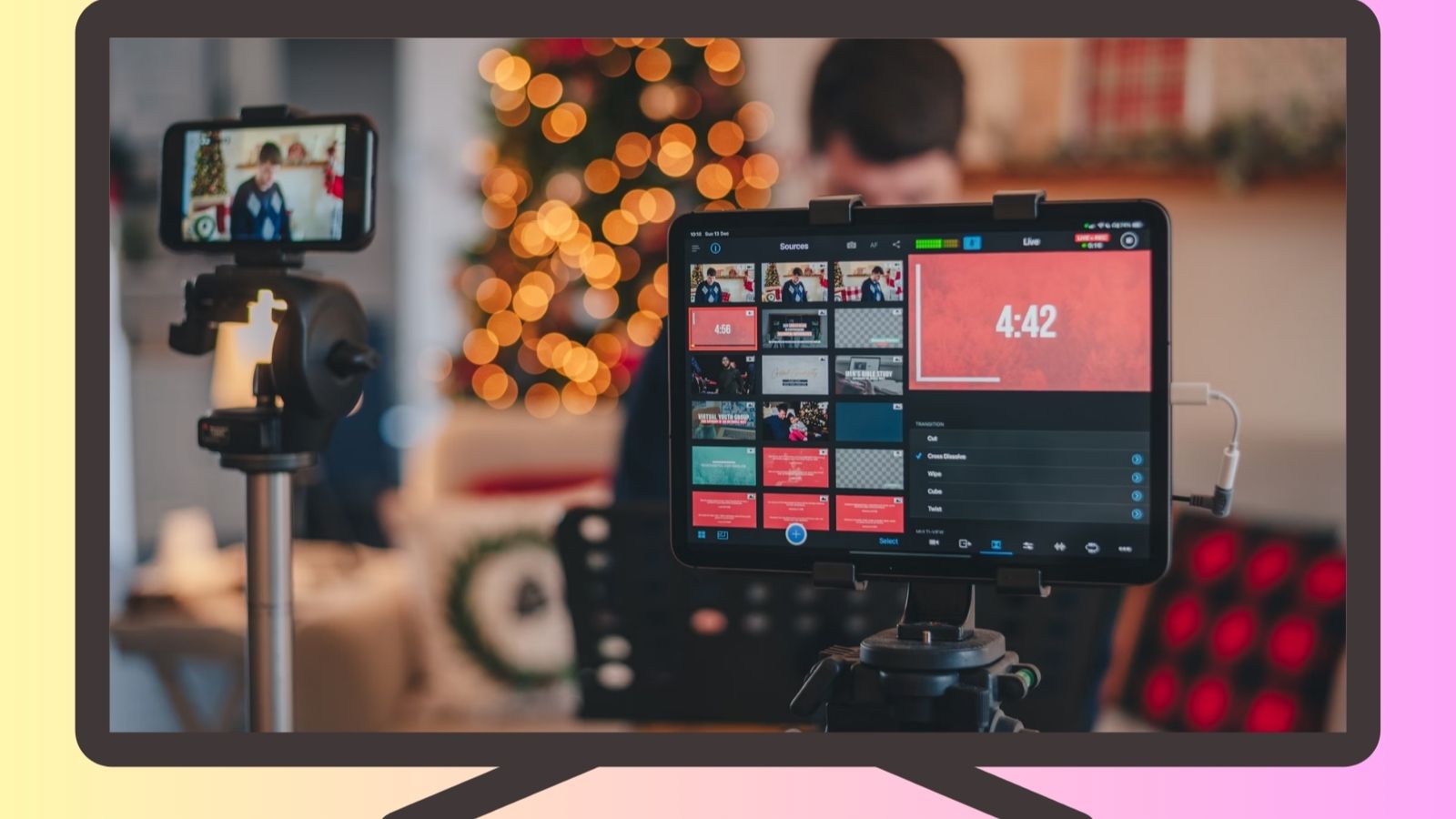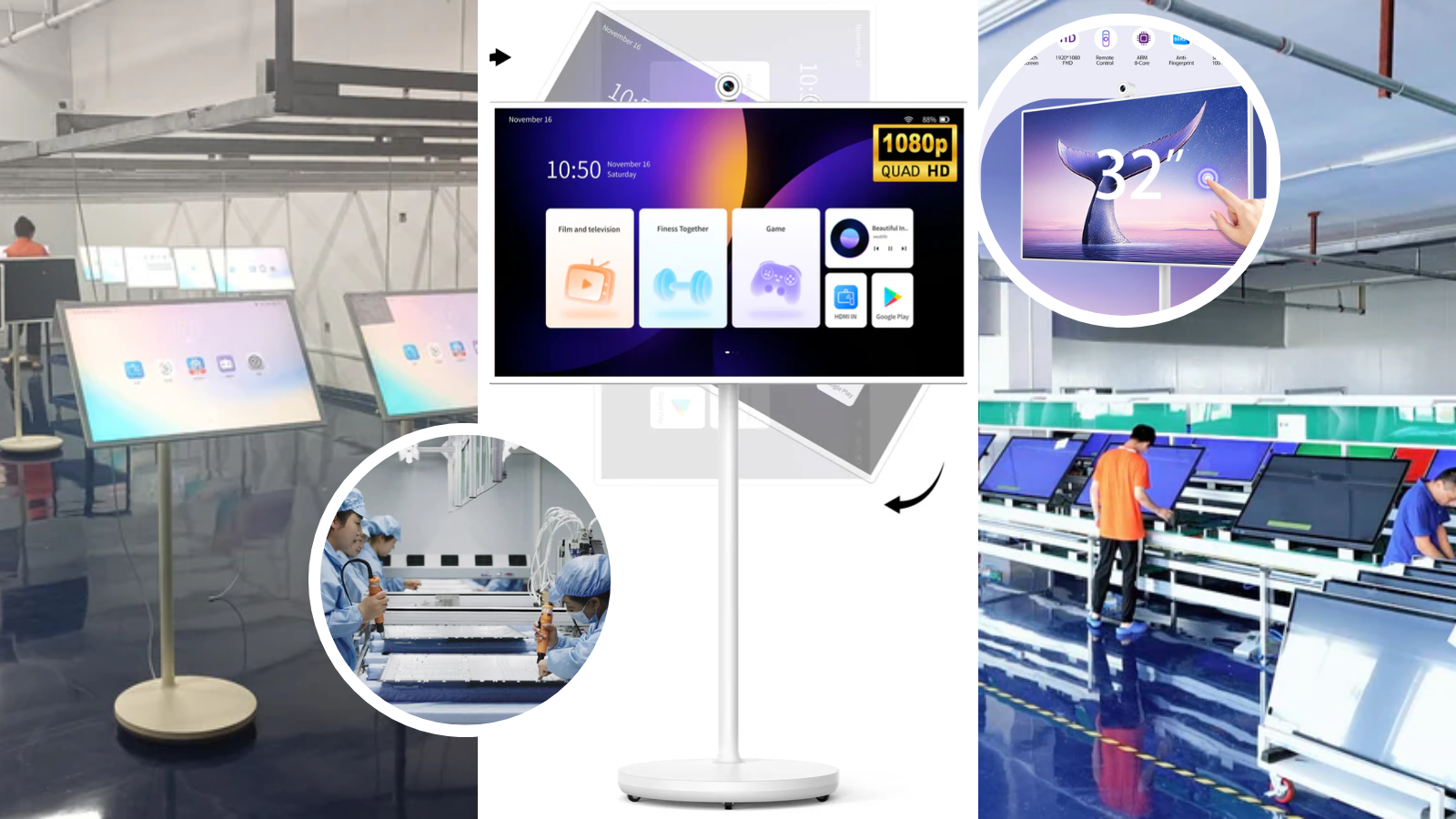Table of Contents
The television industry’s evolution is one of the most well-documented and visually evident shifts in consumer electronics. In just the past two to three decades, it has undergone a series of breakthroughs, each more transformative than the last. The introduction of smart TVs marked a major turning point, redefining how viewers interact with content. Now, with the rise of portable TV units on wheels, we’re witnessing another leap, this time centered on flexibility, mobility, and on-demand access.
What we’re seeing today is a clear trend: major brands and smaller manufacturers are racing to capture a share of the growing portable TV market. Businesses and retailers are responding with urgency, recognizing the real-world utility and strong demand behind these mobile, smart displays. But what exactly does the portable TV market entail and more importantly, is it truly a profitable space for businesses to invest in?

Portable Wheeled TV Market Size Analysis
Portable TV on wheels are definitely riding a wave right now. The global wheeled TV market was valued somewhere around USD 73.16 Billion in 2023[1], depending on whether you're talking about handhelds or larger outdoor models. Either way, it's growing fast. Really fast. Consider double-digit growth, with projections hitting USD 169.47 billion by 2031, reflecting a robust CAGR of 10.5%. That tells you people are increasingly looking for screens that travel with them, where they can watch their favorite TV shows or movies in the comfort of their homes or backyards, present proposals and ideas in corporate meetings, or even teach students of any age moving from one classroom to another.
Key Players Shaping the Market
The big names leading this space shouldn't come off as surprising. Samsung’s still on top with nearly 20- 28% of the global market [2], but TCL is catching up fast, especially with affordable smart models that perform well. In the OLED segment, LG shipped about 3.18 million OLED TVs in 2024 and holds over 50% of the global OLED market[3], but TCL actually overtook them in sales last year. Then you’ve got players like Sony, Hisense, and Xiaomi who are quietly doing well, especially in Asia and other regions where smaller, more affordable tech is in high demand.

What all this means is that portable tablet TVs aren’t just another trend. With streaming dominating everything and people living more mobile lifestyles, these devices cater to both convenience and entertainment at just the right junction. We’ll probably see even better screens, longer battery life, and smarter features rolling out soon. Basically, this space is about to get a lot more competitive and a lot more interesting.
Changes in User Demand for Smart Displays
It’s not 1987 anymore. We’re not gathering around one sacred living room TV like it’s the family altar. We're living in shared apartments, studio lofts, vans, and increasingly, places with no permanent address at all. So a portable TV stand isn’t some niche gadget for campers. It’s turning into something a lot of people actually need.
Movement Is Now a Necessity
And it’s not just about mobility for mobility’s sake. It’s because life itself is constantly in motion.
You can watch a really interesting documentary all while cooking in the kitchen. Your kid want to watch cartoons without hijacking the family screen? Parents can arrange the portable TV on wheels to a location of their choice. Employees of a company can present a project at work on portable screens that can be moved from one conference room to another, without creating capacity for the need to install separate LED TV screens in separate rooms. Portable TVs on wheels are slipping into the background of daily life not as luxury items, but as the logical answer to how we multitask and media-hop all day long.

Smart Is the Standard, Not a Bonus
But let’s not stop at “portable”. Because if that screen isn’t smart, it will most certainly not cater to a wider audience.
We’re not hauling around little dumb boxes that require HDMI cables and manual tuning. People want plug-and-play, Wi-Fi-ready, voice-controlled, app-loaded screens that don’t ask for tech support every five minutes. You want to stream Netflix, run a YouTube playlist, maybe pull up a slideshow, all on one screen, in one click. That’s not indulgent. That’s efficient.
And with how many of us are mixing work, entertainment, and passive existential dread into the same two hours, smarter screens are the only way to make it through without losing your mind.
So no, portable smart TVs aren’t a flex. They’re survival tools for people who live fast, work ungodly hours, and don’t have time to wait for the living room to be available. Convenience used to be optional. Now it’s just the cost of keeping up.
Major Brands to Sell Portable TV on Wheels
LG
LG, Samsung, and TCL are the names you’ve likely heard of in the TV domain, and for good reason. They weren’t just first movers; they’ve consistently been the better ones, adapting quickly to changing consumer needs and leading innovation cycles. In the portable TV segment, LG sets its foot with its early entry and strong design leadership. Its flagship product, the StanbyME 2, was the first fully wireless, battery-powered smart display, and it’s still the benchmark in this space.
The device sold out its first 1,000 units in under 40 minutes[4], and LG has since expanded its lineup with the Smart Monitor Swing, a touch-capable, wheeled monitor built for home and office flexibility. For industries like education, healthcare, and hospitality, LG’s mobility-first approach makes its products ideal for shared, multi-use environments where traditional setups fall short.
Samsung
Samsung, meanwhile, may have entered the portable category a little later, but its Moving Style Smart Monitor series has quickly gained traction, accounting for over 80% of its smart monitor sales in late 2024[4].
What Samsung brings to the table is choice: OLED, QLED, UHD displays, all customizable by size, stand, and color. The only catch is that these displays still need a power outlet. But with a fully wireless model in development, Samsung is clearly aiming to close that gap soon.
Until then, its high-end panel technology and ecosystem integration make its displays a smart pick for executive spaces, premium hospitality suites, and high-impact meeting rooms.
TCL and Hisense
Then there’s TCL and Hisense, the disruptors. These Chinese manufacturers have steadily gained ground by offering more affordable models with decent specs and growing design intelligence.
TCL’s A300W frame-style portable TV with wifi and Hisense’s mobile Canvas TV models may not match LG or Samsung in polish or features, but they’re strong contenders for institutions or public spaces where cost, durability, and deployment scale matter more than brand prestige. Especially in education, retail, and lower-margin hospitality segments, their combination of mobility and affordability hits the mark.
For B2B buyers, the takeaway is simple: portable TVs on wheels are no longer a gimmick; they're a strategic tool. You could either be investing in user-friendly screens for collaborative workspaces or deploying hundreds of units across classrooms or hotels, the top players are offering flexible options at various prices and tech tiers to meet the need.
Best Manufacturer for Portable TV on Wheels
GFF isn’t competing on flash. It’s competing on fit-for-purpose performance. In a market moving sharply toward wireless mobility, interactive displays, and hybrid-use environments, GFF hits key enterprise pain points: deployment speed, flexibility, and cost containment. Their smart, agile production model gives B2B buyers confidence in consistency and scale.
These are only a couple of factors to account for when you set out to compare different portable TVs on wheels manufactured by different companies.
1. Sleek Design Meets Smart Mobility
LG’s StanbyME and Smart Monitor Swing are impressive for being early wireless pioneers, and Samsung’s Moving Style series offers modular elegance. But GFF’s S1 32″ Portable TV on Wheels combines both the efficacy of battery-powered freedom and the convenience of functional design. With five whisper-quiet wheels, adjustable tilt, height, and rotation, and 3–5 hours of cordless operation, GFF delivers real mobility that goes where work, education, or presentations demand without the need of having an outlet or cables nearby.

2. Full Suite of Interactive Features
LG’s touchscreen option and Samsung’s high-end panels are both high up on the spec sheet, but the GFF Android 13 OS, 8‑core ARM processor, Google Assistant voice control, screencasting, and an optional external 2K camera, all-in-one mobile cart, make all the difference, especially for students and businesses.
GFF’s portable touch screen TV smart features support plug-and-play video conferencing, interactive lessons, digital signage, and hands-free cooking demos with zero setup complications to worry about. That means fewer vendors to coordinate with, fewer integrations to manage, and a much faster path to deployment.
3. Agile Supply Chain & White‑Label Potential
Unlike LG and Samsung, GFF operates a nimble manufacturing and logistics model. They offer dedicated B2B support, custom branding, and responsive supply which is ideal for large rollouts or bespoke deployments. Plus, AI-driven inventory optimization (similar to EY and Propel Apps' best practices) allows GFF to reduce lead times, cut costs, and maintain consistent stock levels. That matters when uptime and rapid delivery are mission-critical.
Bottom Line
As a business in the TV industry, you need a supplier that’s reliable. Someone with solid products, high-end tech, and a warranty you can actually count on. Sure, big names like LG and Samsung have already set the standard with their portable TVs, but they still fall short in a few key areas. That’s where GFF really comes in. They’ve identified the gaps those major brands miss and built solutions around them. So if you’re looking to start or grow a business around portable TV on wheels, GFF is the one to come to.





